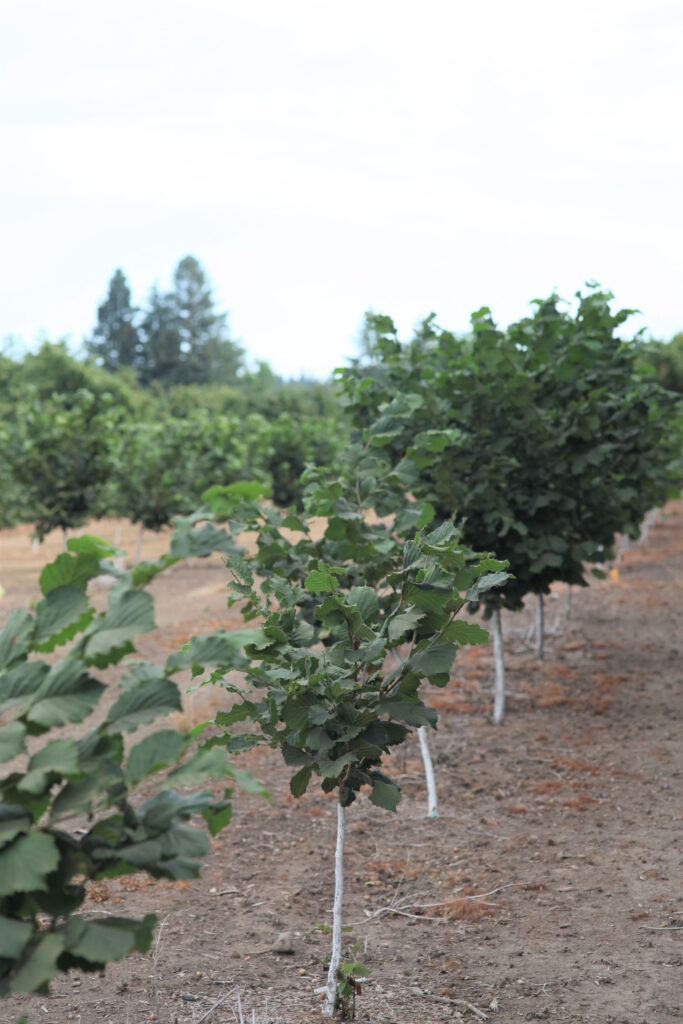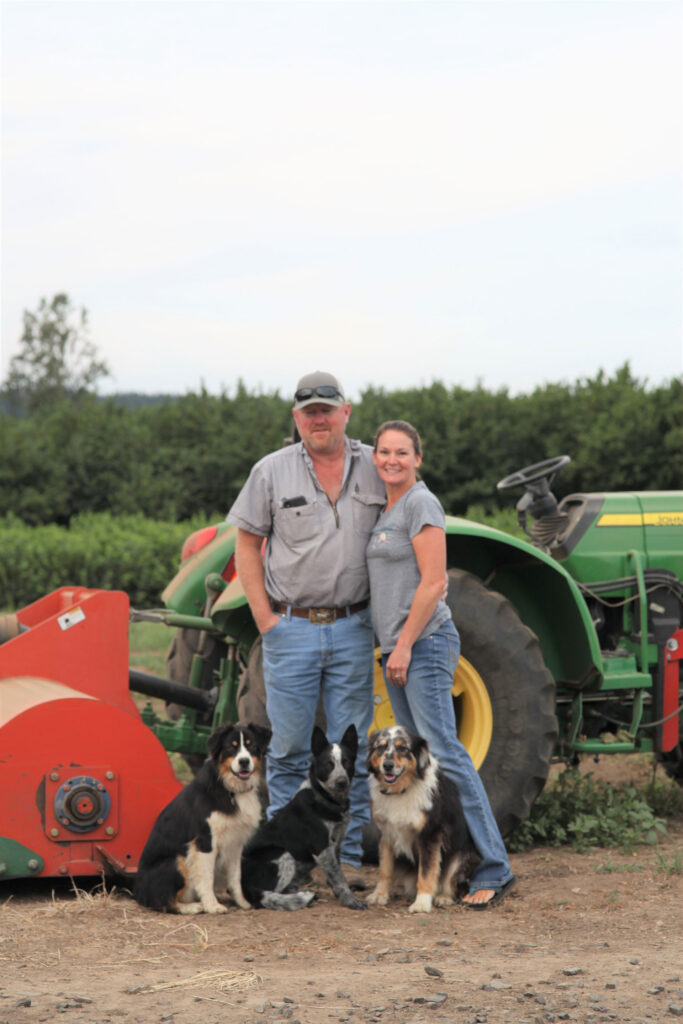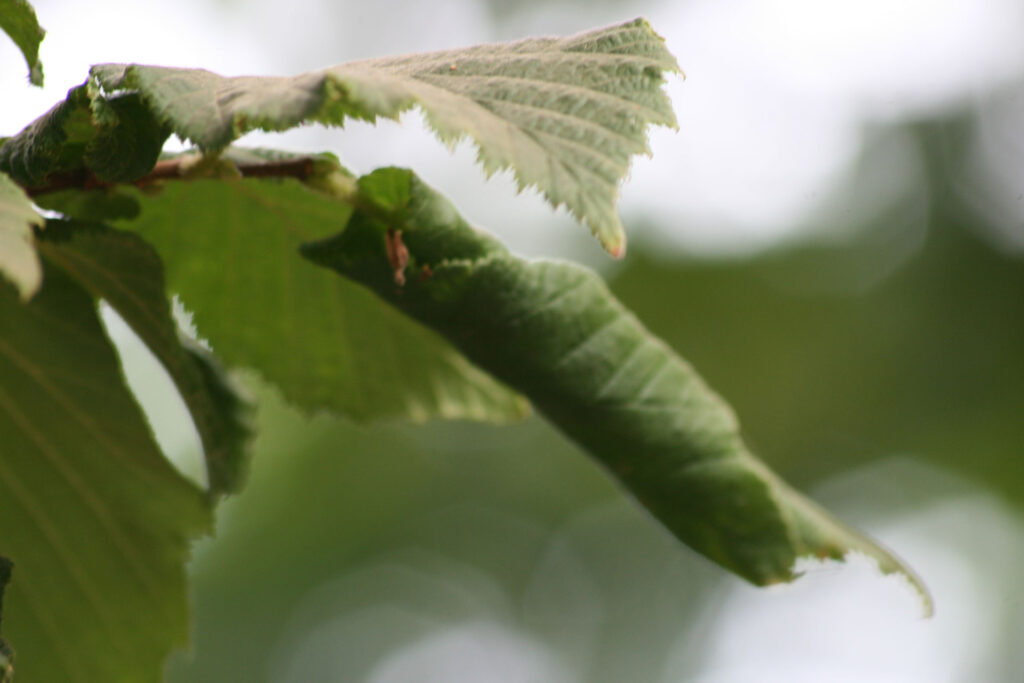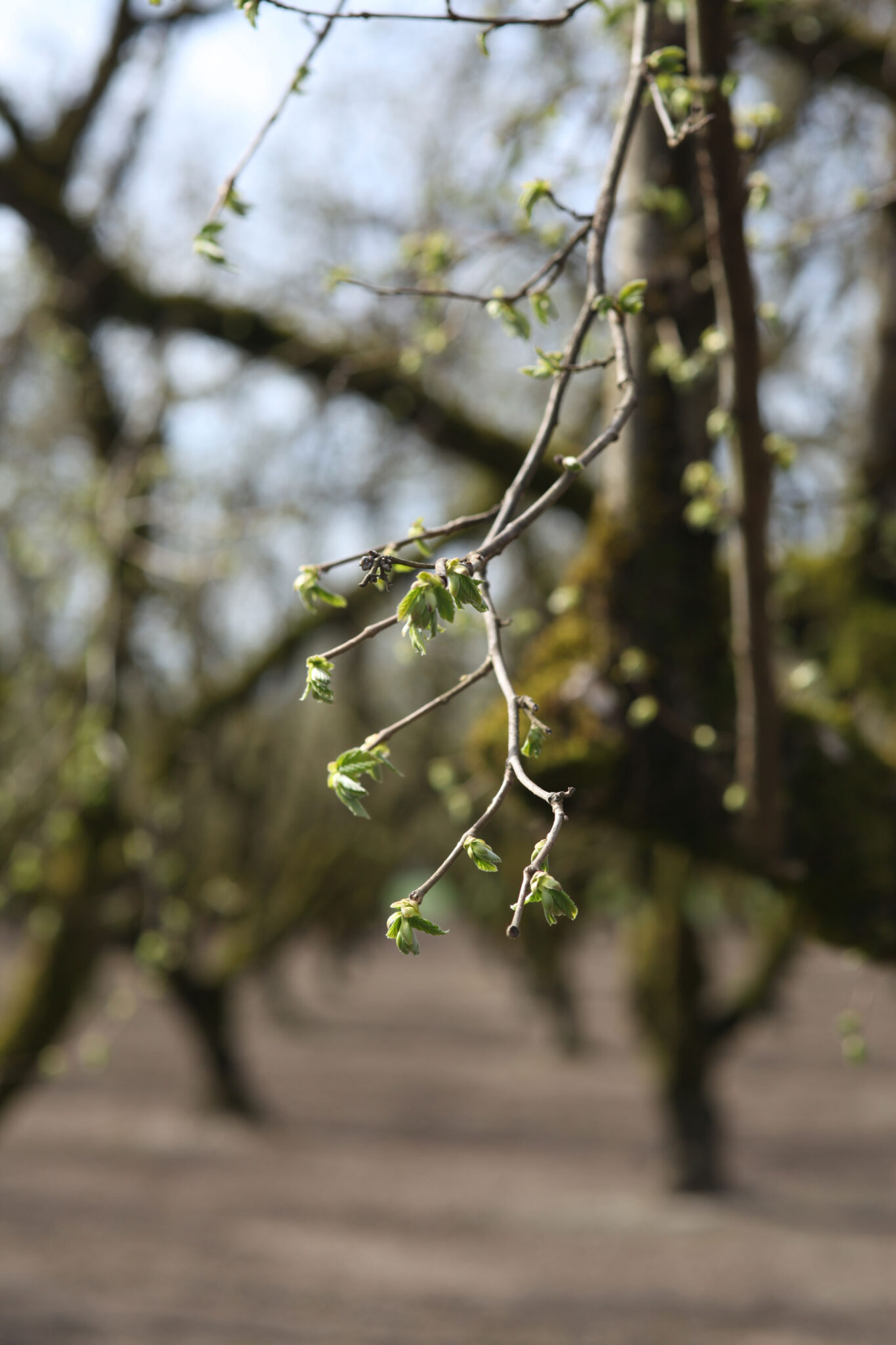The European leafroller, archips rosana, is an evasive species known in Oregon as the filbert leafroller, or the hazelnut-filbert leafroller. The telltale sign of an infestation of leafrollers in a hazelnut orchard is tightly rolled leaves, but unfortunately, after the larvae have rolled the leaves, the damage has already been done.
An adult leafroller is a 1/2-inch to 3/4-inch-long moth. It’s dark brown in color with darker lines across the wings. Females lay flat, irregular masses of eggs on bark or branches in July. By springtime, the egg masses turn grayish in color. The larvae hatch in early spring.
The larvae, or worms, of the hazelnut-filbert leafroller begin chewing on the leaves and buds of hazelnut trees immediately after hatch. The green worms with brown heads feed on the new growth for four to six weeks. Their last feeding site is also where the worms pupate. They roll up leaves with sticky silk and pupate inside.
Hazelnut-filbert leafrollers also damage fruit trees. Leaf damage isn’t so much a problem, but flower and fruit damage in apple and pear crops can cause serious commercial damage.
Monitoring for Leafrollers
According to the Pacific Northwest Pest Management Handbook compiled by Oregon State University Extension Service, Washington State University Extension and University of Idaho Extension, hazelnut growers should start monitoring for leafrollers in mid-March. Check three terminals and three leaf clusters per terminal. Consider each terminal a sampling unit. Look for feeding damage on tender new growth. Also start checking for tightly rolled leaves. Treat for larvae when infestation count shows up on 20% to 25% of sampling units.

To check for adult moths, start in mid-May using one pheromone trap for each five acres of orchard. Place traps six feet up in the tree canopy. Treat for adult moths when the traps catch 40 moths per week.
Biological Control
Biological control includes encouraging beneficial insects, such as parasitic wasps, spiders and brown lacewings. Lacewings, order Neuroptera, can be recognized by the complex vein pattern of spots and specks on their otherwise see-through wings, making them somewhat resemble lace. Their wings are held roof-like over their bodies. Lacewing adults and their larvae eat soft-bodied insects and mites.
Lacewing larvae are 1/3 of an inch or less and look almost like tiny alligators with a long neck and bodies tapering at the tail. Lacewing larvae are cream colored or gray with two brown or reddish stripes or rows of spots running down the top of their body.
Cold temperatures help control leafrollers. Winters with low temps keep the insect numbers down.
Bacillus thuringiensis var. kurstaki can be used as a biological control with results ranging from poor to satisfactory.
Often, biological control is enough to manage leafrollers. Chemical control may not even be necessary.
Chemical Control
If using chemical control, apply in the early spring when hazelnut leaves are 3/4 of an inch to one inch long. Pesticide is more effective if applied when the worms are still small. There are many different chemical controls to consider, but several are extremely toxic to fish and aquatic habitat. Also, several have restricted use in Oregon.
Jason Whitehead and his family farm 2,300 acres in Scio and Lacomb, Ore. in the Mid-Willamette Valley. Their operation, JRW Farms, is largely grass seed, but currently includes 400 acres of hazelnuts. Whitehead also grows his own hazelnut nursery stock.
“We’re harvesting something from June until November 1,” Whitehead said. He’s looking to cut back and has plans to soon cut out the grass seed completely and cut back his hazelnuts to about 130 acres.

Before buying his first 86-acre chunk of land in 2005, Whitehead worked for other farmers. A farmer that employed him when Whitehead was in high school grew hazelnuts. Whitehead enjoyed working in the hazelnut orchards. He found driving the tractor through the trees peaceful.
As far as leafroller issues in hazelnuts go, “They’re more of a problem in young trees,” Whitehead said. For control, he follows chemical labels.
“I don’t target them in big trees,” Whitehead said, adding that for older trees, he targets sprays more for hazelnut-Filbertworm moth and brown marmorated stink bug.
Filbert Leafroller Moth or a Filbertworm Moth?
How do you tell the difference between hazelnut-filbert leafroller moths and the hazelnut-Filbertworm moth? The leafroller moth is brown with darker brown strips and stripes across its wings, while the hazelnut-Filbertworm moth can range in color from reddish to gray. The biggest clue to spotting a hazelnut-Filbertworm moth is to look for the telltale metallic golden bands across each forewing.

The larvae of the hazelnut-Filbertworm pupate in the spring and the adults emerge from early summer through mid-fall, usually mid-June through October, so the two species have some overlapping time as adult moths during summertime in the orchard.
According to the Pacific Northwest Pest Management Handbook, growers should start hanging pheromone traps for hazelnut-Filbertworm moths in mid-May to catch the first of the emerging moths. Hang four traps for the first 10 acres and one trap after that for each additional four acres. Hang the traps in the upper third of the canopy. Hanging traps high is important for best results because pheromone is heavier than air, so it moves downward. Take control action when two or three moths are caught per trap, or five moths are caught in any one trap.











